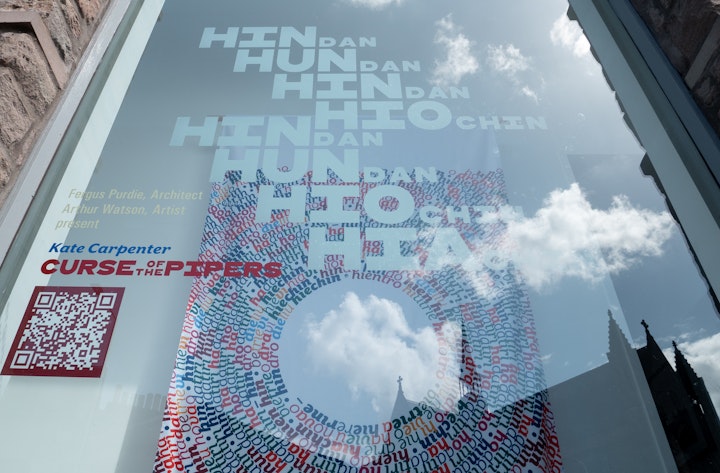Can we translate the aural experience of music into something visual?
Exhibition in The Window, Perth; August 2023.
The pieces in this exhibition translate the aural experience of pibroch, the classical music of the Highland bagpipes, into a visual experience with the same expressive force and intensity.
The Window
The tune “Curse of the Pipers” is rendered in canntaireachd, a tradition of singing vocables to teach pibroch. By bringing the notes together in a spiral of text, with letters colliding with each other, I aim to recreate the experience of a wall of sound, from the first note to the last, with an intensity unlike any other instrument.
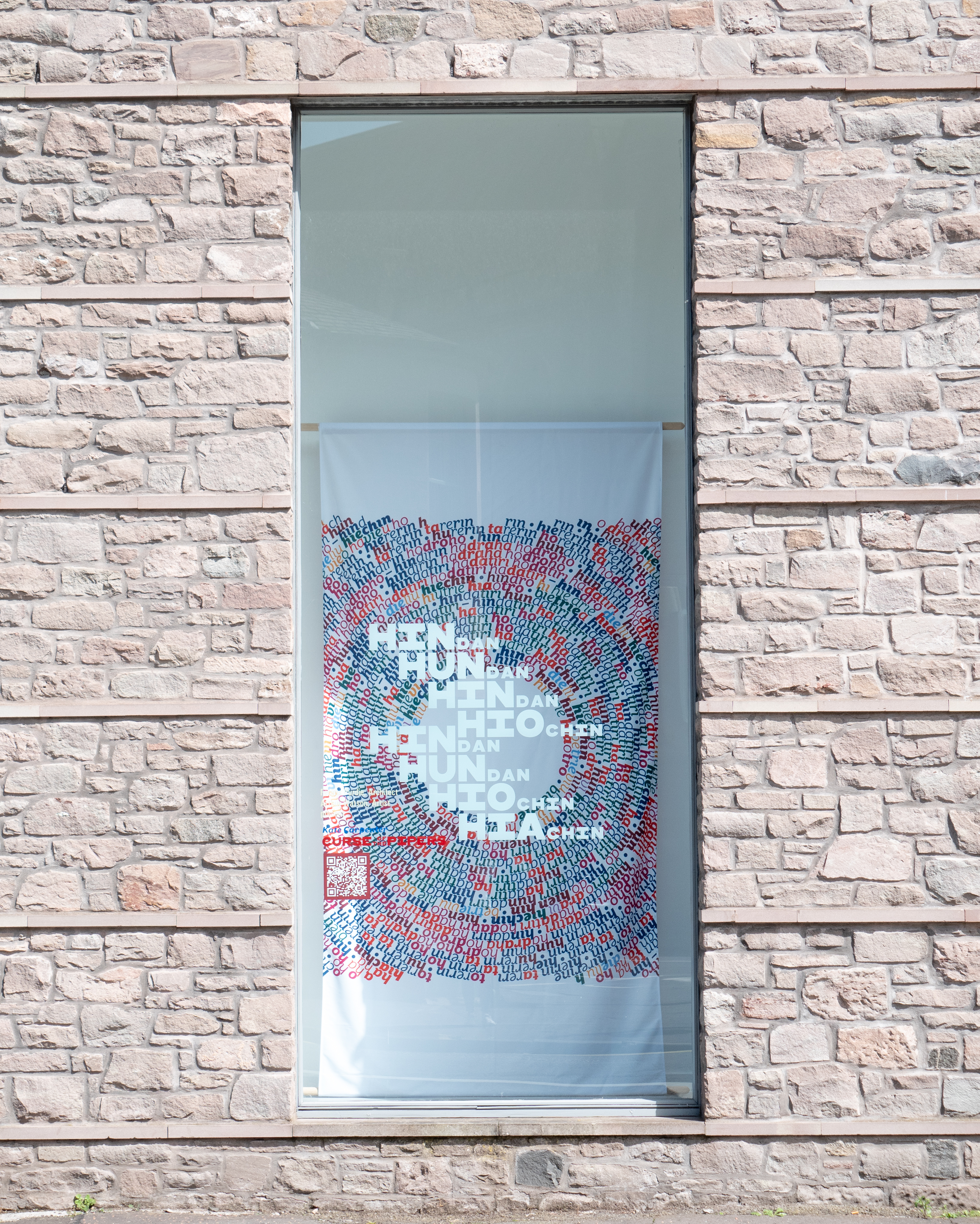
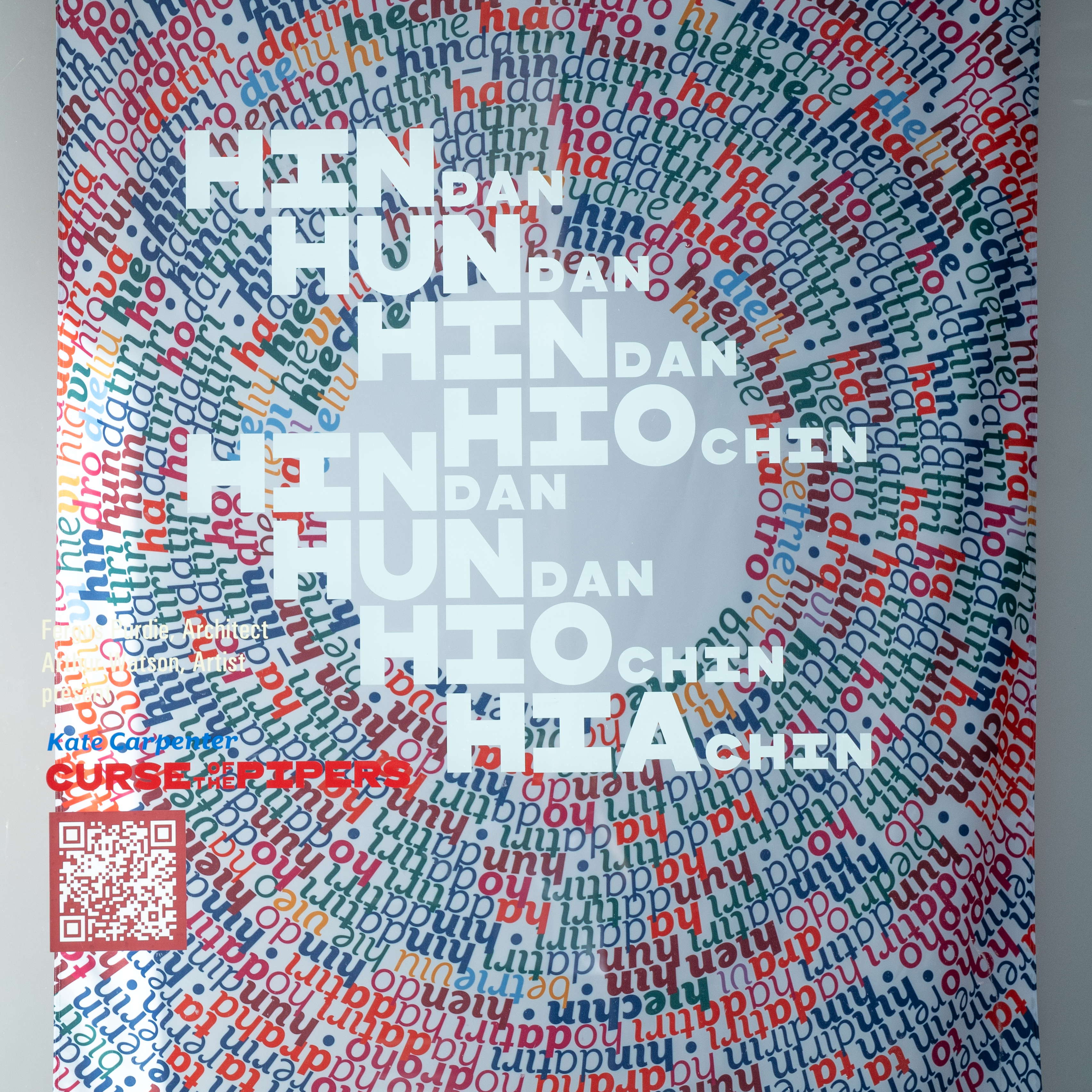
Mallachd nam Piobairean
These two prints explore the musical patterns in "Curse of the Pipers" ("Mallachd nam Piobairean", in Gaelic). This tune is also known as "Lament for the Union" (as in, dismay at the union between Scotland and England in 1707).
Many pibroch start with a ground (or urlar), followed by variations built on the musical themes developed in the ground. Unusually, the variations in this tune don't show a clear relationship to the musical motifs of the urlar; and it's been suggested this may have been deliberate to show that Scotland and England, "like oil and water", do not mix (Piobaireachd Society Book 6).
The first print highlights this distinction between urlar and variations.
The second print illustrates the motif established and developed throughout the variations.
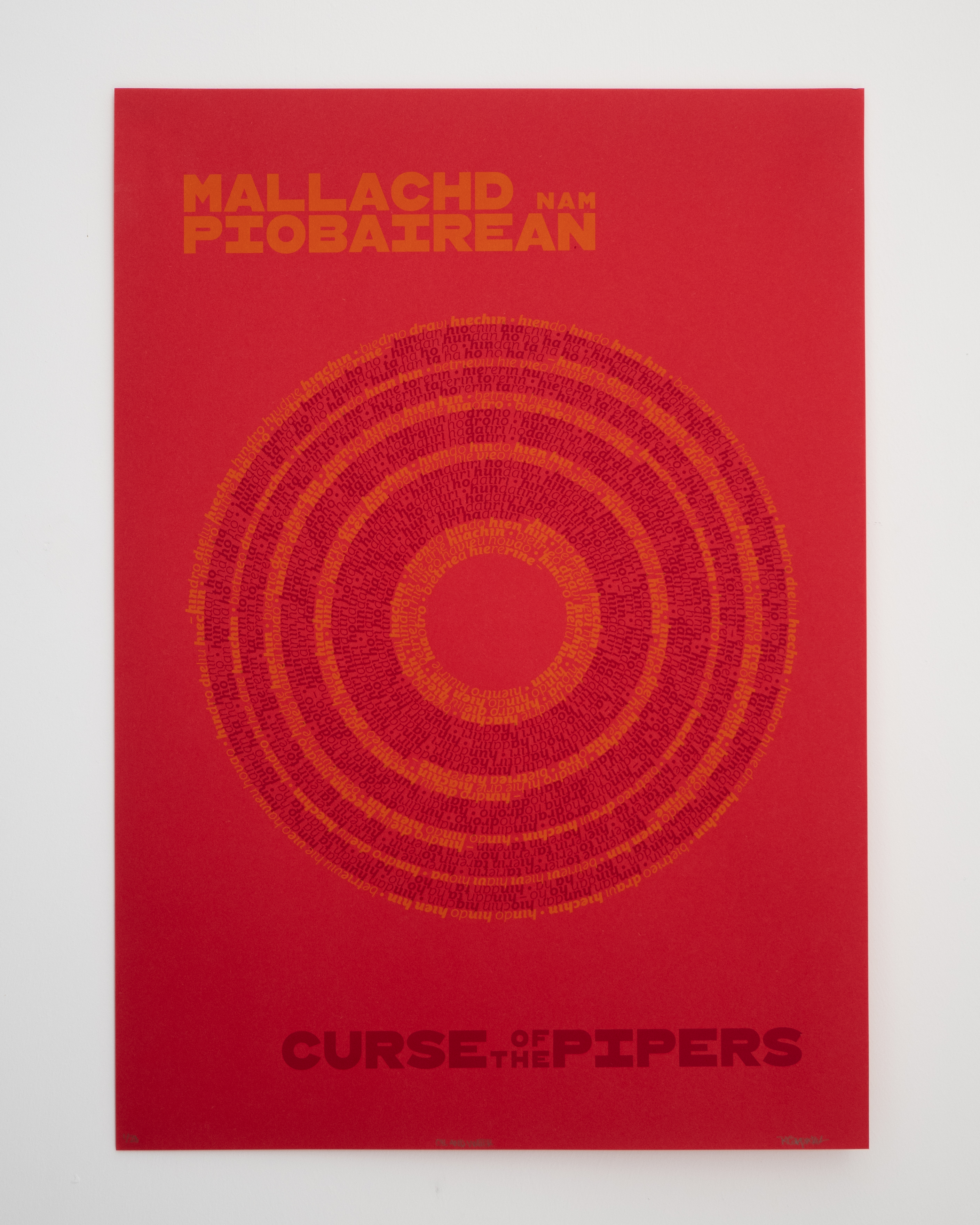
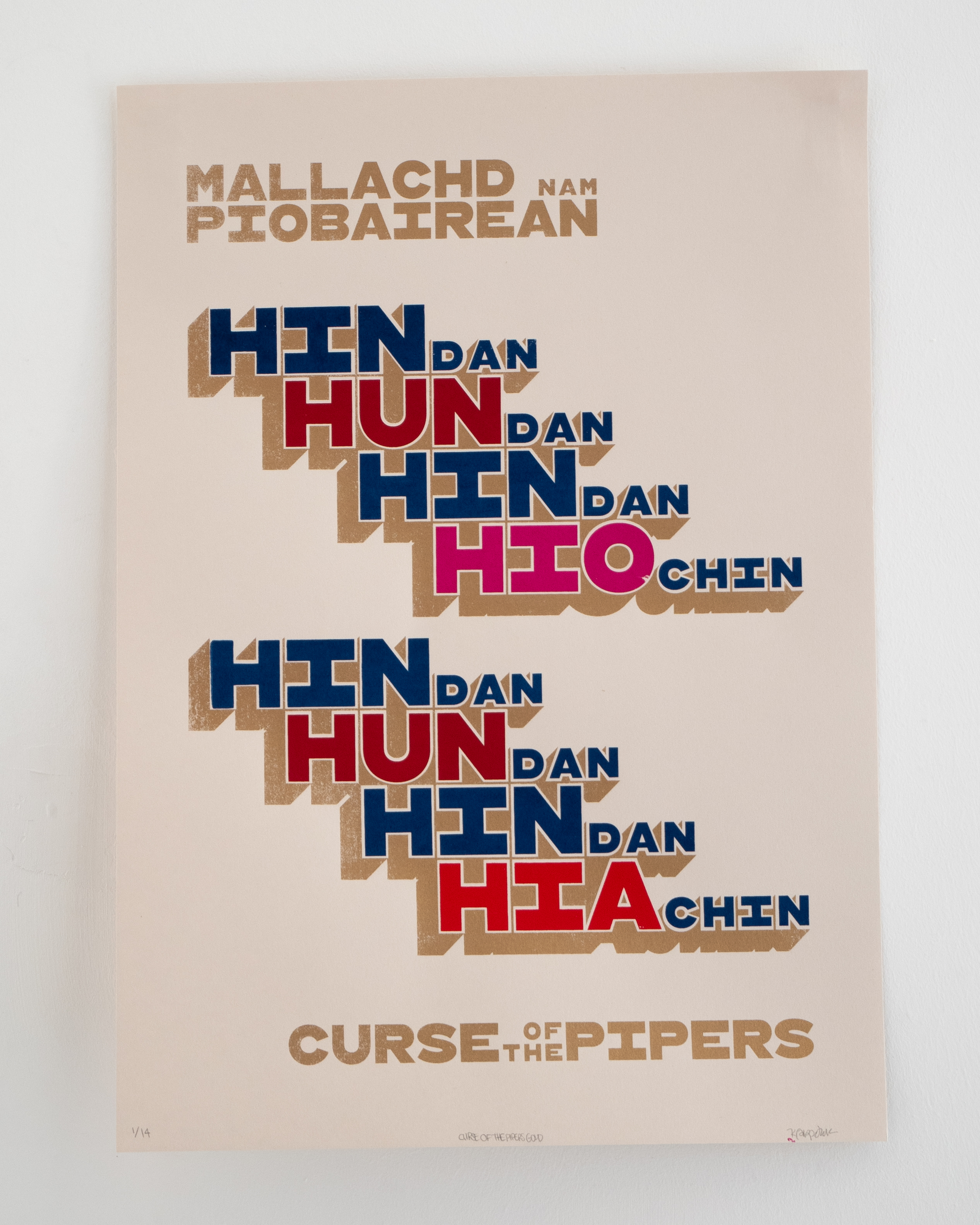
The Gathering: A Zoetrope
"The End of the Little Bridge" is a call for the clans MacLeod and Cameron to gather; stoking courage in the face of danger.
The tune starts with the ground, followed by a variation, the ground is played again, and then another variation and so on. The ground allows both the listener and performer a brief respite from the intensity, before the next variation.
As the tune progresses, the call to gather becomes more and more insistent; the musical motif becomes more focused, the notes become higher and higher, and the tempo quickens. Watch the zoetrope above with canntaireachd performed by Barnaby Brown.
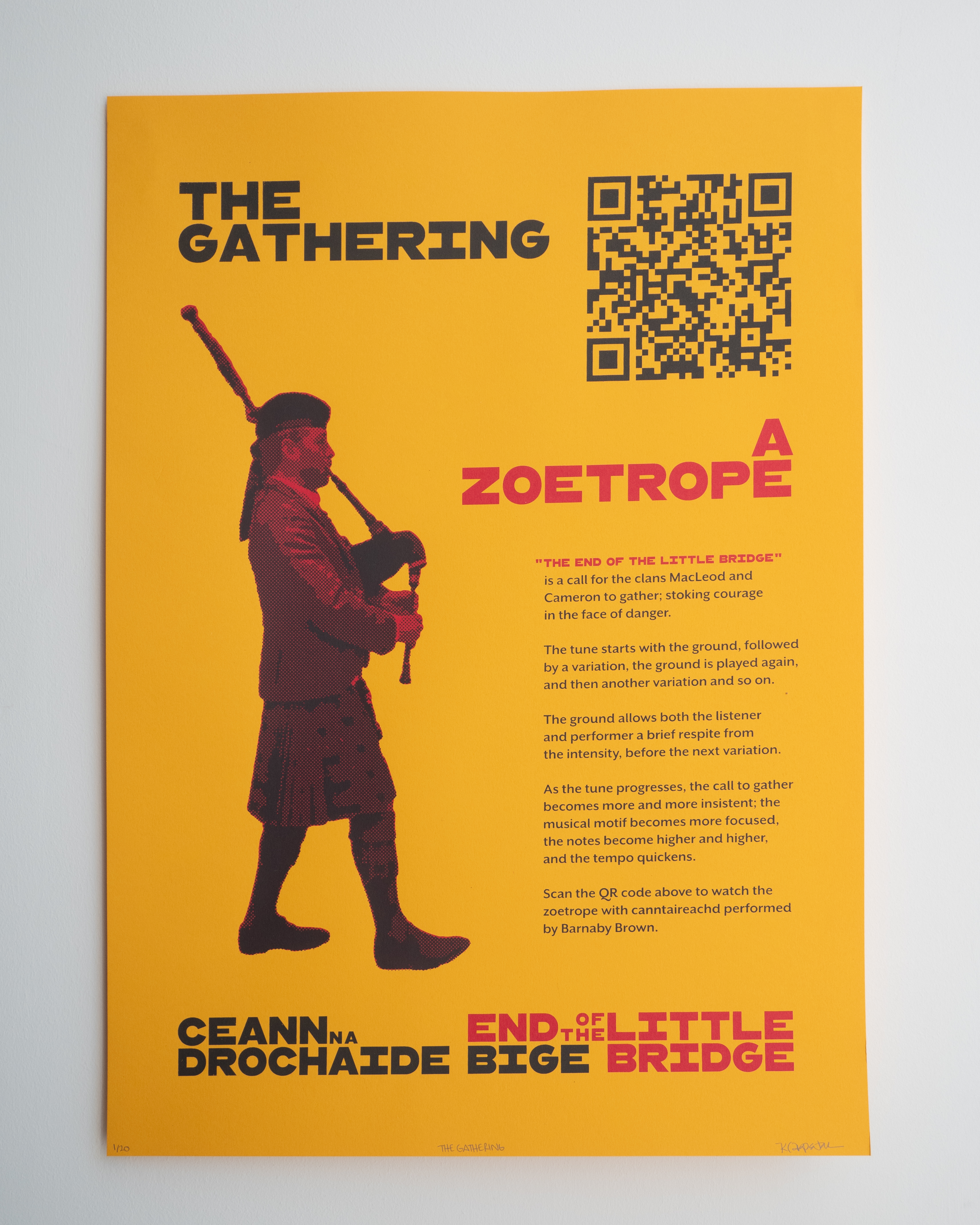
The Gesto Canntaireachd
This exhibition celebrates the launch of the book "The Gesto Canntaireachd", an illuminated update to the 1828 publication. Overlaid onto the text of canntaireachd I developed a natural language to convey pipe music graphically.
The musical information is embedded in each vocable using colour and type weights. Line numbers are included for ease of reference and cross-checking, generous space between lines make it easier to read, and allow a musician or student space to make notes.
Purchase your copy of the book here.
Purchase editions of the screen prints from this exhibtion here.
